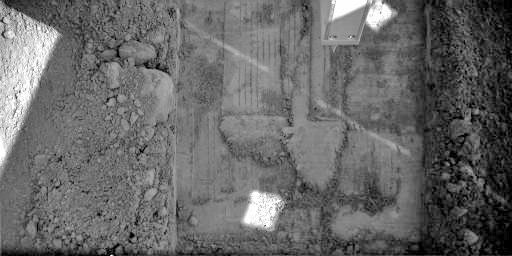Mars Lander Runs into Tough Digging

NASA's Phoenix Mars Lander has hit a roadblock while tryingto scoop a sample of dirt into one of its ovens.
For the past day, Phoenixhas been using its robotic arm to scrapeaway at a hard icy surface on the red planet, trying to claw enough dirt outto pour into its onboard instrument. So far, it has only accumulated smallpiles of shavings, which it has not been able to scoop into the oven.
Phoenix robotic arm co-investigator Ray Arvidson ofWashington University in St. Louis compared the probe's task to trying toscrape away at a sidewalk.
"We have three tools on the scoop to help access iceand icy soil," Arvidson said. "We can scoop material with the backhoeusing the front titanium blade; we can scrape the surface with the tungstencarbide secondary blade on the bottom of the scoop; and we can use a high-speedrasp that comes out of a slot at the back of the scoop."
He said the team hoped to make some progress with amotorized rasp tool on Phoenix's robotic arm to help dig into the hard icy soiland ice deposits.
Though the probe managed to scrapeaway a bit of material from the surface, the small piles it accumulatedwere smaller than on previous digs, and it wasn't able to get any of the dirtinto its scoop.
"It's like trying to pick up dust with a dustpan, butwithout a broom," said Richard Volpe, an engineer on Phoenix's robotic armteam from NASA's Jet Propulsion Laboratory in Pasadena, Calif.
Breaking space news, the latest updates on rocket launches, skywatching events and more!
On Monday Phoenix performed 50 scrapes in a trench called"Snow White" it had previously dug. The material is intended to beanalyzed in Phoenix's onboard oven instrument, the Thermal and Evolved GasAnalyzer (TEGA), to determine its chemical properties.
The $420 million Phoenix probe landed May 25 in the northernpolar region of Mars in search of signs the environment could be habitable tolife.
- Video: Digging on Mars
- Video: Phoenix, Rising to the Red Planet
- Images: Phoenix on Mars

Clara Moskowitz is a science and space writer who joined the Space.com team in 2008 and served as Assistant Managing Editor from 2011 to 2013. Clara has a bachelor's degree in astronomy and physics from Wesleyan University, and a graduate certificate in science writing from the University of California, Santa Cruz. She covers everything from astronomy to human spaceflight and once aced a NASTAR suborbital spaceflight training program for space missions. Clara is currently Associate Editor of Scientific American. To see her latest project is, follow Clara on Twitter.
